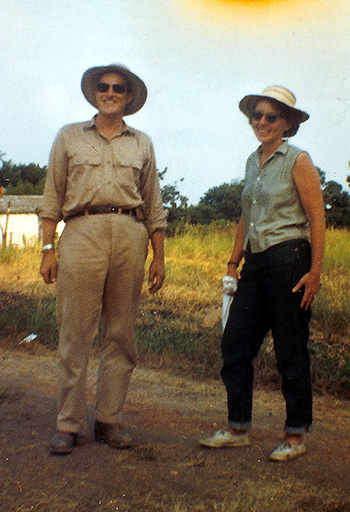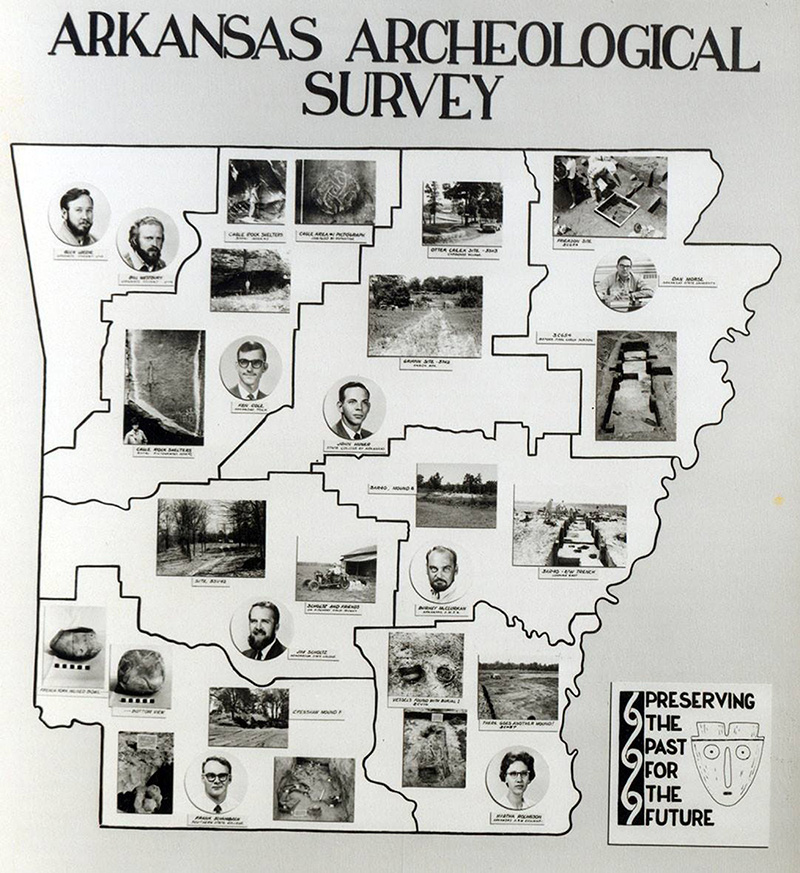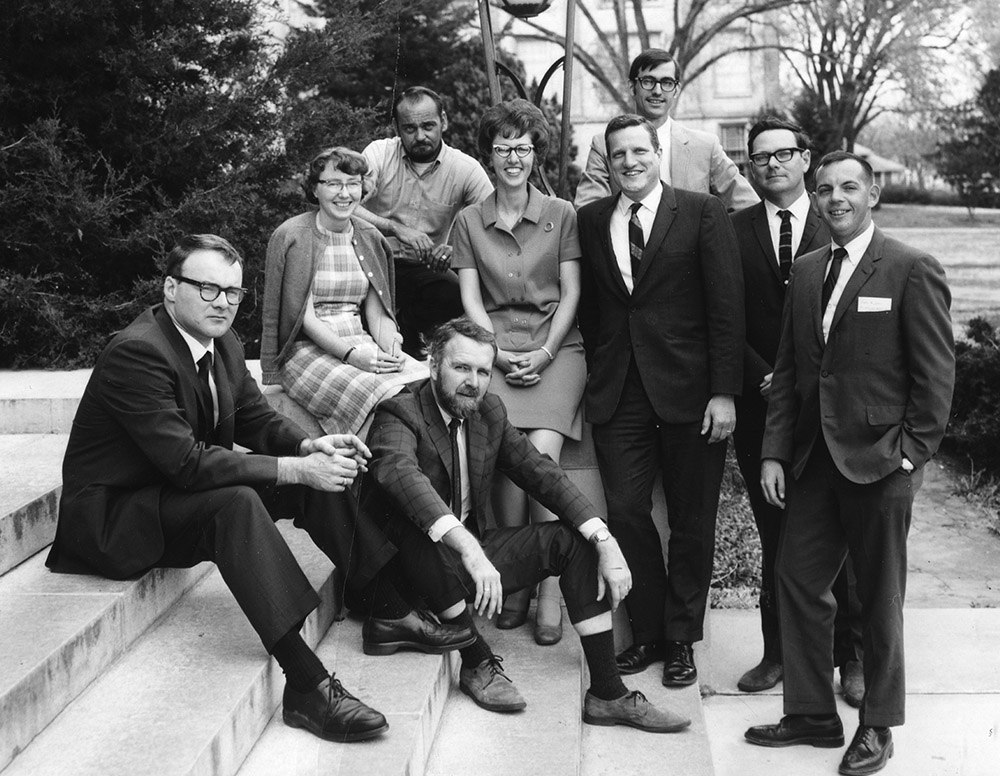George Sabo, Director
Charles R. “Bob” McGimsey joined the faculty of the University of Arkansas in 1957, fresh off the boat from Panama, as he liked to say. His appointment had been arranged by Samuel C. Dellinger (Professor of Zoology and Museum Curator), who for many years championed a university program of archeological research to serve the needs and interests of Arkansas citizens. McGimsey started as Assistant Professor in the Department of Sociology and Assistant Curator at the University Museum. His goal, following completion of the ongoing research in Panama, was simply to expand Dellinger’s efforts to study Arkansas prehistory within the context of the usual professorial duties that included teaching and campus service. Events transpired differently.
Coincidentally with McGimsey’s arrival in 1957, some Arkansas legislators had begun developing their own ideas for creating a state archeology program. As the newly installed archeologist on the campus of the state’s flagship University, it fell to Bob—at the suggestion of Dellinger and University President John C. Caldwell—to begin assembling information and preparing proposals and budget recommendations for a statewide program centered at the University of Arkansas. Enabling legislation (Act 82) crafted as a result of McGimsey’s efforts was passed in April, 1959 and signed into law by Governor Orvil Faubus, who then vetoed the accompanying funding bill. Back to the drawing board.
In the meantime, McGimsey hired Hester A. “Rusty” Davis to fill a newly created Museum Preparator position. Bob and Hester worked together during the next few years conferring with legislators, university administrators, highway department officials, and other stakeholders including avocational archeologists. In 1960, the Arkansas Archeological Society (AAS) was created to serve the interests and needs of the avocational community. A companion training program involving a week-long dig, supervised by McGimsey and Davis, was initiated for AAS members in 1964.
Through a trial and error process in crafting legislation, Bob and Hester settled on a proposal to develop a program centered at the University of Arkansas, but open to any other campus in the state that wished to participate. The plan envisioned a statewide network of professional archeologists housed in research stations on various campuses where office, lab, and curation space would be provided. The archeologists would have part-time teaching (or other service) duties compensated by the host institutions but otherwise their time and efforts would be devoted to working with landowners to document archeological sites, developing associated research programs drawing in part on the assistance of local AAS members, and communicating the results of their research to interested individuals and groups.
With crucial lobbying support from AAS members, the Arkansas legislature in 1967 passed Act 39 to create the Arkansas Archeological Survey as envisioned by McGimsey and Davis, along with an accompanying antiquities preservation bill (Act 58), and an appropriation bill (Act 270) providing program funding in the amount of $125,000. Signed into law by Governor Winthrop Rockefeller, these acts enabled the creation of a Survey coordinating office on the University of Arkansas campus, along with research stations at Arkansas State University (Jonesboro), Arkansas A&M College (Monticello), and Henderson State Teacher’s College (Arkadelphia). That year, Hester was appointed to a newly created Survey position of State Archeologist. Within a few years and with additional funding from the legislature, the Survey established research stations at Arkansas AM&N College in Pine Bluff, Southern State College (Magnolia), Arkansas State Teachers College (Conway), and Arkansas Polytechnic College (Russellville). A research station at the University of Arkansas (Fayetteville) eventually replaced the duties fulfilled by graduate students at the University of Arkansas when the Survey was first created.
The Survey presently consists of a Coordinating Office on the UAF campus and research stations headed by Ph.D. archeologists located there and on seven other campuses and at two state parks. Our organization brings archeology and anthropology to students and to the general public across the state. Bob served as Director of the Survey from its founding in 1967 until his retirement in 1990, and Hester served as State Archeologist until her retirement in 1999. Under their leadership, the Arkansas Archeological Survey became a national model for state programs designed to promote archeological research, preservation, and public education.

Save
Save
Save
Save


